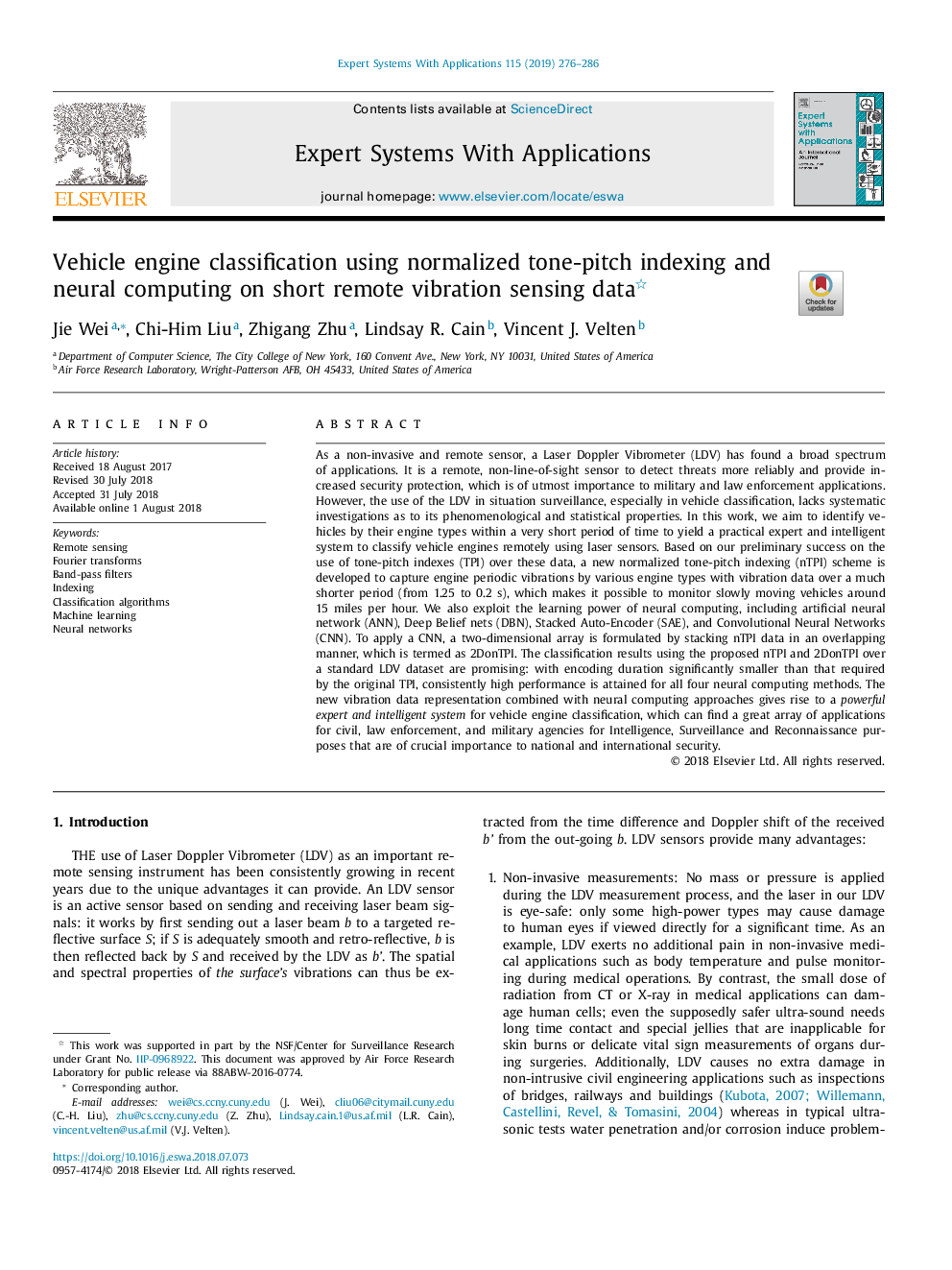| Article ID | Journal | Published Year | Pages | File Type |
|---|---|---|---|---|
| 6854654 | Expert Systems with Applications | 2019 | 11 Pages |
Abstract
As a non-invasive and remote sensor, a Laser Doppler Vibrometer (LDV) has found a broad spectrum of applications. It is a remote, non-line-of-sight sensor to detect threats more reliably and provide increased security protection, which is of utmost importance to military and law enforcement applications. However, the use of the LDV in situation surveillance, especially in vehicle classification, lacks systematic investigations as to its phenomenological and statistical properties. In this work, we aim to identify vehicles by their engine types within a very short period of time to yield a practical expert and intelligent system to classify vehicle engines remotely using laser sensors. Based on our preliminary success on the use of tone-pitch indexes (TPI) over these data, a new normalized tone-pitch indexing (nTPI) scheme is developed to capture engine periodic vibrations by various engine types with vibration data over a much shorter period (from 1.25 to 0.2Â s), which makes it possible to monitor slowly moving vehicles around 15 miles per hour. We also exploit the learning power of neural computing, including artificial neural network (ANN), Deep Belief nets (DBN), Stacked Auto-Encoder (SAE), and Convolutional Neural Networks (CNN). To apply a CNN, a two-dimensional array is formulated by stacking nTPI data in an overlapping manner, which is termed as 2DonTPI. The classification results using the proposed nTPI and 2DonTPI over a standard LDV dataset are promising: with encoding duration significantly smaller than that required by the original TPI, consistently high performance is attained for all four neural computing methods. The new vibration data representation combined with neural computing approaches gives rise to a powerful expert and intelligent system for vehicle engine classification, which can find a great array of applications for civil, law enforcement, and military agencies for Intelligence, Surveillance and Reconnaissance purposes that are of crucial importance to national and international security.
Keywords
Related Topics
Physical Sciences and Engineering
Computer Science
Artificial Intelligence
Authors
Jie Wei, Chi-Him Liu, Zhigang Zhu, Lindsay R. Cain, Vincent J. Velten,
